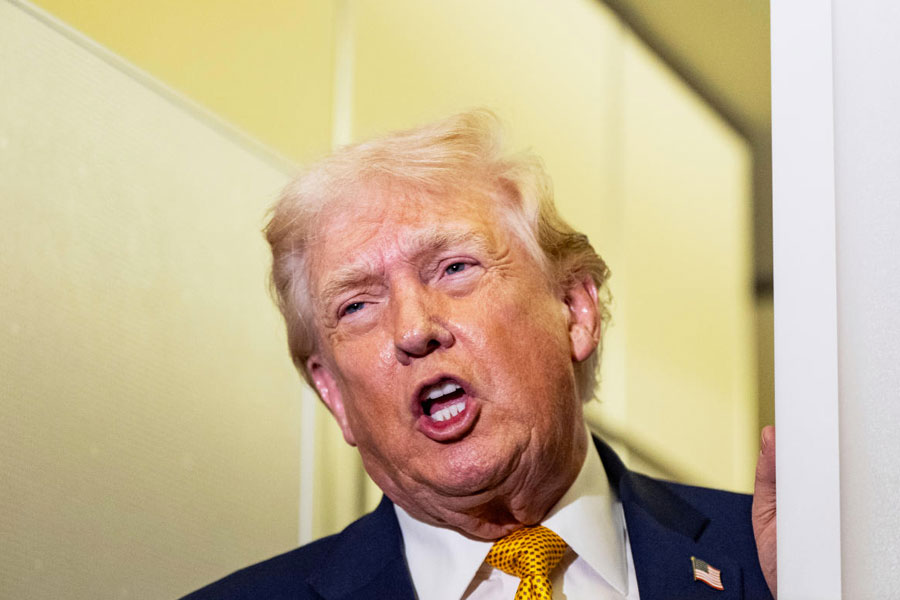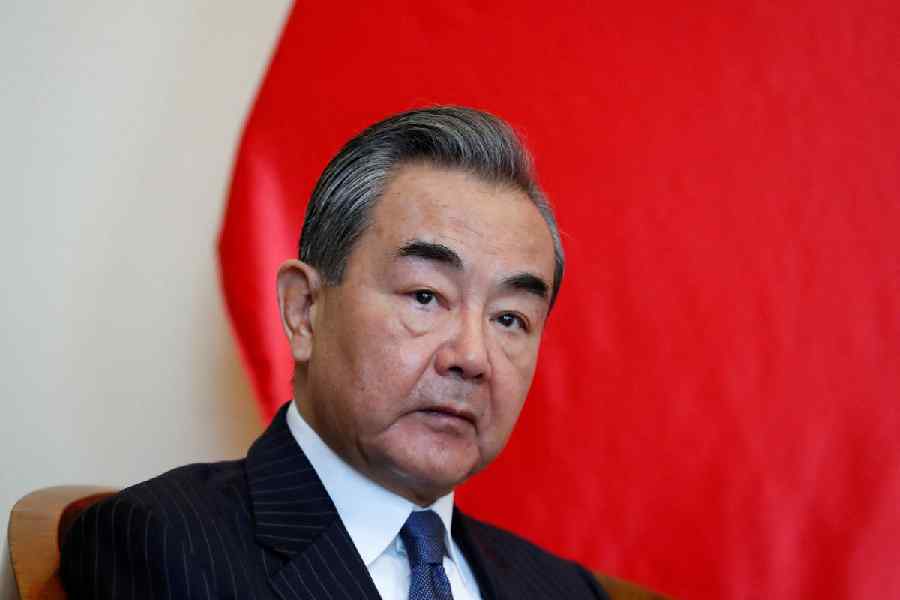|
|
Crying over spilt milk or over who had spilled it more than six decades after the event is, according to one view, a sure sign of decadence. To compare the partitioning of the country and the grisly, tragic consequences thereof with spilt milk, others will say, is offensive to the limit. Whatever that be, the ripples caused by Jaswant Singh’s otherwise-pedestrianly-written book will not easily subside; the publishers are still minting money.
Spice has been added to the proceedings by the happenstance of transferred zeal. It is the Congress, and not the Bharatiya Janata Party, which should have exploded with anger over Jaswant Singh’s holding Jawaharlal Nehru primarily responsible for the creation of Pakistan. To Congressmen, the charge is nothing less than lése majestè. How unfair, they were not allowed the pleasure of expelling the blackguard, he was not a member of their party.
The BJP, however, swung into action, but not because the Jodhpur princeling traduced Nehru. That was all right. He had no business though, the Hindutva school of thought will argue, to bracket, along with Nehru, the great Sardar from Karamsat. Public memory is short; political parties too go through mutation. Big chunks of the ideological descendants of Vallabhbhai Patel moved away from the Congress even as the Nehru-Gandhis were taking over the party, lock, stock and barrel. They now constitute Narendra Modi’s hardcore constituency. There was actually no greater preacher of Hindu revivalism than Kanhaiya Lal Munshi, Patel’s close mentor and immediate successor as Union home minister. Jaswant Singh was most indiscreet; he had to be sent to the gallows.
Thanks to his indiscretion, an occasion has at least arisen to revisit some old myths. One such is that the Congress had all along envisaged free India as a federal entity where residual powers will repose with the federating units. In the party’s early phase, its leaders, of course, used to gush along these lines. Even the 1942 Quit India resolution spoke of an India which, once rid of alien rulers, will emerge as an arcadia of a federation; the residual powers were to rest with the provinces, the Centre will only enjoy powers delegated to it.
There is such a thing as appearance’s sake. For, simultaneously, the Empire of India the British had set up, stretching from the borders of Burma at one end to those of Afghanistan at the other, bewitched the English-educated affluent gentlemen who led the Congress since it founding. The mystique and majesty of the imperium — the concentration of all authority in the hands of the viceroy and governor-general representing the Crown —bowled them over. They were determined to inherit that majesty, in toto; transfer of power by the British meant acquiring the prerogative to govern the country entirely according to their own lights. They had a further aspiration: the administrative system of post-independent India should be the mirror image of the Congress’s organizational structure, where decision-making was concentrated in the hands of the cabal designated as the working committee. Members of this committee loved to call themselves the Congress high command; independent India, too, should be ruled by such a mightily high command.
The 1940 Cabinet Mission’s plan for a three-tier federation —provinces, groups and the Centre — was, therefore, a big letdown for the Congress leadership. This was not what it wanted. The proposal to have groups at the intermediate level of administration left Congress leaders cold. Besides, all subjects other than foreign affairs, defence and communications were to be vested with the provinces. It was explicitly stated that the provinces would retain all powers and jurisdictions other than those credited to the Union.
While the details of the arrangements were to be worked out by a constituent assembly, it was understood that it must adhere to the broad scheme outlined in the Cabinet Mission plan. The provinces were to be arranged into three groups: A) consisting of the then existing provinces of Madras, Bombay, the United Provinces, the Central Provinces, Bihar and Orissa; B) tucking in Sind, Punjab and the North-West Frontier Province; and, finally, C) to consist of Bengal and Sind. Any province could, by a majority vote in its legislature, move out of the group it was assigned to, but only after an initial period of 10 years and at 10-yearly intervals thereafter.
The Cabinet Mission did not concede Mohammad Ali Jinnah his Pakistan. But what he got was enough; he was sure of controlling Group B and reasonably confident about Group C. He accepted the plan; his sole reservation was regarding the composition of the interim government where he demanded parity of representation with the Congress. The Congress leadership, on the other hand, hemmed and hawed. Yes, formally the integrity of India was preserved. There was to be a Union government over which the Congress would presumably be able to establish command. But it would be in exclusive charge in only three spheres: foreign affairs, defence and communications, with powers to raise finances to the extent the compliance of responsibility in these spheres called for. The grandeur of the imperium was sadly missing. Apprehension overtook the Congress ‘High Command’: the chances were that Groups B and C would always be dominated by the Muslim League which was bound to create problems, one after another, for the Union.
The prospects need not have been that bleak. The speculation was that Group C, comprising Bengal and Assam, consisted of almost the same number of non-Muslims as Muslims. That apart, given the class character of the League leadership and the nature of issues that were of central concern to the Muslim masses in both Bengal and Assam, the Muslim League could only hope to have a tenuous hold on Group C. Had the Congress not spurned in 1937 the invitation from A.K. Fazlul Huq to join the Krishak Praja Party and form a coalition government in Bengal, the League might have never gained a foothold in that province.
But the Congress leaders had reached their decision. Over a period of 15-odd months they engaged in interminable sessions with British minister and the viceroy over the interpretation of this or that clause in the Cabinet Mission Plan. A great quantity of the discussions centred around the proviso which allowed a province to opt out of the group to which it originally belonged after a time span of 10 years. The Congress insisted on the option being made available from the very beginning; they were anxious, to rescue the North-West Frontier Province — then under Congress rule largely because of the charisma of Khan Abdul Ghaffar Khan — from the clutches of Jinnah. While the ping-pong game of talks and yet more talks was going on, a press interview by Jawaharlal Nehru put the fat in the fire: the Congress, he hinted, might use its clout in the constituent assembly to ignore the directive of the Cabinet Mission in the matter. The Muslim League was furious, Jinnah went back to his demand for Pakistan. The Direct Action resolution and the Great Calcutta Killings, followed by even more frightening mayhem, vitiated the air. Patience wore thin on all sides. An exhausted Wavell was replaced as viceroy by get-down-to-business Mountbatten. Nehru and Patel agreed that, notwithstanding Mahatma Gandhi, they would be satisfied with a truncated India if that would deliver them from Jinnah. They thereby reneged from their earlier pledge to stand by Frontier Gandhi and his khudai-khidmadgars. What was, at the moment, of immensely greater importance to them was the establishment of a free India with a firm central authority and no nuisance of groups challenging that authority.
The Congress leaders got their imperium — even though reduced in scale — and Mohammed Ali Jinnah got his Pakistan, which coupled Groups B and C with some modifications. But Group C did not stay with Pakistan. It emerged as Bangladesh within a quarter of a century. History has, seemingly, a habit of now and then revising itself.











